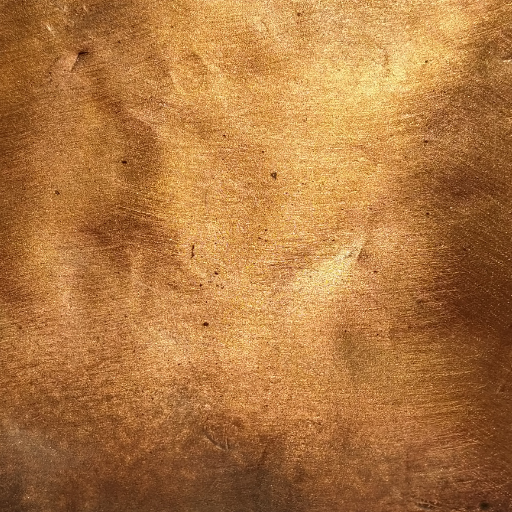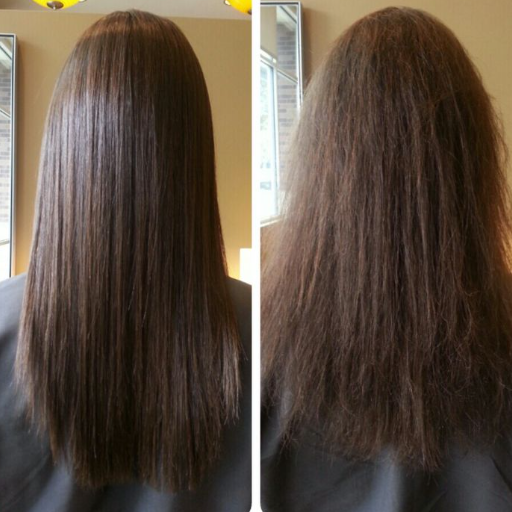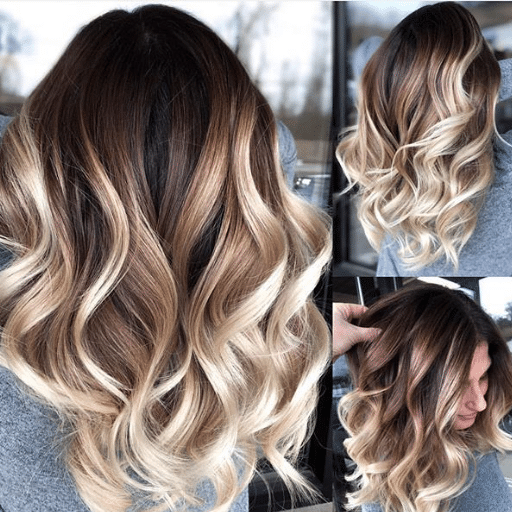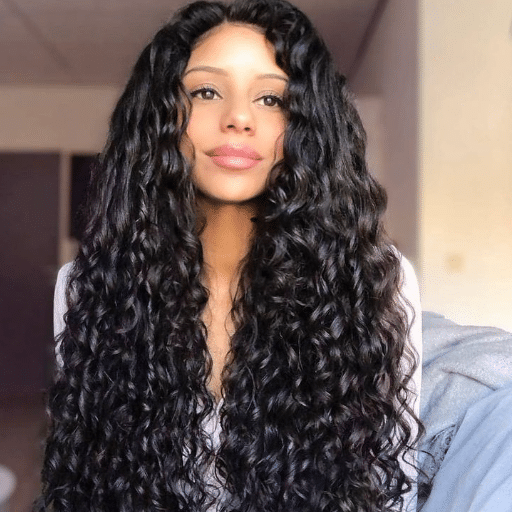Bronze, a color whose timeless warmth and elegance evoke the malleability of a metal alloy, is not just a shade – it’s an emblem of taste and sturdiness. This blog explains everything about the Bronze color—from its hex codes to all shades that are used in interior designing or fashion. From knowing its hexadecimal and RGB codes in digital representation, to discovering shades ranging from deep ruddy undertones to lighter gold-infused hues we put nothing past you. Additionally, we’ll provide practical suggestions and creative hints on how you can add bronze in your aesthetic so as to take advantage of its richness in any design project. It’s time for you to discover the many sides of this adaptable and fascinating bronze object as an artist, designer or enthusiast.
What is the History of Bronze Color?

Bronze color has a tightly-knit history with bronze metal, an amalgamation of copper and tin. During the Bronze Age that began around 3300 BC, bronze was generally put into practice when making various tools, weapons and artistic works hence; it played a significant role in advancing human society. This unique warmth which comes from metal and is found in the color bronze symbolizes power, longevity and finesse. For centuries oil rubbed bronze has been aesthetically pleasing not only to metallurgists but also to artists, architects and fashion designers. Even today, it still reminds us of the evergreen beauty as well as its cherished place in the context of historical tribute or modern trends.
Ancient Origins of Bronze
Ancient Mesopotamia, around 3300 BC, is where bronze found its beginnings in the Bronze Age. The period was identified by major achievements in tool manufacture, weapons and art facilitated by bronze which is a mixture of tin and copper. This material began to be used extensively throughout Egypt, China and Europe for trade as well as civilization development according to accounts from Smithsonian as well as National Geographic. The durability of bronze against stone and copper made a significant change in different dimensions of life making it possible to come up with better tools as well as beautiful artwork.
The Bronze Age: Technology and Society
The Bronze Age was characterized by a lot of technological and societal developments facilitated largely by the discovery and use of bronze. New tools and weapons that were stronger, more powerful and long lasting compared to their earlier stone-based and copper based models emerged during this period. With bronze ploughs and sickles being manufactured agricultural efficiency increased leading to rise in food availability hence population growth. There were also some changes in the way societies are organized with time as there emerged hierarchal communities which became complex, followed by urban centers. As different regions acquired different types of bronze metals through trade, it helped in migration of people from one region to another; therefore, early human civilization was influenced greatly by economic and cultural exchanges fostered between regions where the production of bronze is done.
Bronze in Modern Times
Bronze still remains important in many industries today because of its strength, chemical resistance and good looks. The low friction between metals makes it possible to use bronze for bearings, shielded bushes or gears in many different manufacturing applications. In addition, the fact that bronze can’t wear out easily has made it very appealing for artists, manufacturers of musical instruments and medals. Bronze is also an ideal alloy for marine applications due to its pitting resistance in saltwater conditions making it a perfect choice for ship’s propellers as well as underwater fixings . It is clear that this historical material still retains its significance in current art and industry by virtue of being both functional and visually attractive.
How Do You Use the Bronze Color Code?

The bronze color code is used primarily in digital design and manufacturing to ensure consistency and accuracy in the representation of the bronze hue. Designers use the hexadecimal code #CD7F32 for bronze in web design, graphics, and visual media to achieve a specific shade. Additionally, precise RGB (205, 127, 50) and CMYK (0, 38, 76, 20) values are used in printing to replicate the bronze color accurately. By employing these standardized codes, professionals can maintain uniformity across various platforms and materials, ensuring the desired visual effect is consistently achieved.
Hex Code for Bronze
Crucially, achieving the right shade in digital and print design requires that you know the hex code for bronze which is #CD7F32. This code from HTMLColorCodes, Color-Name and Encycolorpedia gives a more detailed description of how you can make correct representations of color. Designers also use RGB values such as (205, 127, 50) and CMYK values like (0, 38, 76, 20) alongside hexadecimal codes for this color. These figures help ensure that the same shade of bronze appears on different media or materials as per intended.
RGB and CMYK Values
It is important to note that RGB and CMYK values play a major role in maintaining consistency when representing the color bronze in digital and print media. The RGB value for bronze is (205, 127, 50). The ‘R’ stands for red while ‘G’ denotes green and ‘B’ is blue on a scale from zero to two hundred fifty-five respectively. With this combination specifically chosen, it becomes easy to show bronze’s hue accurately on screens.
Print material uses CMYK numbers like these; “C” stands for cyan; “M” refers to magenta while “Y” represents yellow whereas “K” means key (black). They are expressed as percentages allowing accurate reproduction of bronze shades through printed matter. In order to maintain uniformity during production across different platforms and materials like designs with standardizations of these types should be used by manufacturers.
Using Bronze in Digital Design
Knowing how to apply this elegant and timeless color in order to beautify visual aesthetics is essential when one is dealing with bronze in digital design. This suggests that judicious use of bronze can bring an element of classiness and refinement. As such, it is commonly used in UI designing, web elements, and branding to create a feeling of dependability and age.
To highlight important elements and create contrast against more neutral backgrounds, designers advise utilizing bronze as a background color. Therefore, it goes well with colors such as deep greens, dark blues or rich burgundies enhancing the whole visual impact devoid of crowding the observer. Furthermore, using textures and gradients made of bronze will add some depth and dimension making digital designs lively.
Designers must ensure that they maintain the same bronze color on various digital platforms by employing hex code (#CD7F32), RGB values (205, 127, 50) and CMYK values (0, 38, 76, 20). By doing so they take into account not only aesthetic unity but also user experience that takes pleasure in creating beautiful things as well.
What are the Different Shades and Variations of Bronze?

Bronze as a versatile color comes in a number of shades and variations, each one having its own unique visual appeal. Among the most noticeable ones are:
- Classic Bronze: This one is conventional shade of bronze with warm reddish-brown hues and metal-like reflections.
- Antique Bronze: This tone has a less vibrant and ancient look with green or blue crust known to cause aged effect.
- Dark Bronze: It looks like a deeper version of bronze containing more black or dark brown elements therefore appearing calmer and more sophisticated.
- Light Bronze: It resembles pale and softer type of bronze with yellow or gold undertones hence suitable for lighter applications demanding subtle metallic touches.
- Copper Bronze: This variety combines reds from coppers with browns from bronzes thus giving it lively appearance.
By making use of these various colors, designers can achieve the desired aesthetic effects when they want to achieve traditional, modern or rustic looks.
Exploring Different Bronze Shades
When exploring different shades of bronze, it is essential to understand the unique characteristics each variation offers.
- Classic Bronze: Classic tone; warm reds; lustrous; time-tested. It is commonly employed in conventional designs evoking richness and durability aspects when used on buildings.
- Antique Bronze: A more subtle old-fashioned hue often having greenish-blue patches as a result of aging. For such creations as historic-looking housing units this shade brings back nostalgia.
- Dark Bronze: The incorporation of darker notes—black and dark brown—in this type makes it appear deeper. Its profoundness appeals to people who like contemporary design projects as well as minimalism that lies behind them.
These shades of bronze add distinct visual appeal and can be used to achieve a range of aesthetic effects in design projects.
Matching Bronze with Other Colors
A harmonious and visually arresting palette that can elevate any design project is created by matching bronze with other colors. Here are some ways to effectively pair bronze with other colors:
- Neutrals: Bronze can be easily paired with neutral tones such as white, beige, and grey to achieve a well balanced and sophisticated appearance. The neutrals’ cool tones provide a calm background that emphasizes the warmth of bronze.
- Blues and Greens: These cold colours contrast beautifully with warm toned bronzes . Turquoise, teal, and navy work best in creating an arresting and vibrant colour scheme.
- Earth Tones: Brown, terracotta, and olive are natural complements to bronze which increase its organic appeal. This combo is perfect for achieving a grounded and cohesive design aesthetic.
- Purples and Reds: When combined with bronze, deep purples, burgundy or wine reds give a luxurious opulence. The richness of these colours intensifies the metal finish on bronze thereby making it stand out.
By utilizing the distinctive properties of bronze as well as its analogous colors; these color combinations allow one to achieve different aspects of design goals from contemporary charm through traditional rusticity.
Popular Bronze Combinations
The popular bronze composites usually include the pairs with colors that emphasize the rich warm tones of this material. These are some of the trends:
- Bronze and White: This traditional combination provides a timeless, refined appearance. The contrast between white and bronze effect gives the overall look a typecast, minimalist feel which is great for modern design.
- Bronze and Navy Blue: The depth of navy blue coupled with its cool undertones against bronze’s warm metallic shimmer creates an amazing combination. With this pair, you can achieve elegance in both conventional and modern environments.
- Bronze and Blush Pink: In this case, the softness of blush pink blends well with the strength of bronze to provide a fragile romantic appeal. It is ideal for creating an intimate atmosphere that is cozy as well; hence it remains common in interior décor and fashion circles.
Such common matches show how bronze can be used effectively to create various kinds of designs that are beautiful to look at depending on personal taste or style preferences.
How Can You Incorporate Bronze Color in Your Home Decor?

Including various elements and accessories can enable you to incorporate bronze into your home decor. For example, faucets, cabinet handles and lighting are great bronze fixtures that can be used to add elegance in the kitchens and bathrooms. On the other hand living spaces can become more attractive when decorated with bronze picture frames, mirrors or decorative pieces like sculptures and vases. Besides, focal points in furniture such as coffee tables or shelving units can also be created using bronze accents. Furthermore, think about incorporating some bronze textiles such as curtains or throw pillows so that you can make a room cozier and softer. When done correctly this will result in an inviting environment which is uniform featuring warm rich hues of bronze.
Using Bronze Paint Effectively
Bronze paint can give your interiors a touch of elegance and warmth. Instead begin with an accent wall when painting one using bronze color schemes because it has more impact without being too much for space. Additionally, it goes very well with neutral shades like creams and beiges but also deep ones like navy blue. Make sure that the surface is smooth and primed before applying the final coat for a perfect finish. Moreover combining other finishes like metallic or matte with the bronze paint makes it look more dynamic. A sophisticated ambiance can be achieved if good lighting highlights the sheen on each part of the bronzed paint thereby making each room look inviting too.
Bronze and Matte Finishes in Home Decor
By incorporating bronze and matte finishes into your home decor, you can lift the aesthetic of any room to a level of sophistication with timeless elegance. Bronze fittings such as taps, door knobs and lighting bring in an element of tradition while still being fashionable and long lasting. Alternatively, use matt paint on the walls to have a calm welcoming backdrop that enhances the richness brought about by bronze accents. Combining these finishes creates a balanced contrast where the warm glow of bronze complements the low-key glamour of matt surfaces for a slick yet united look.
Bronze Accents in Furniture and Accessories
Incorporating bronze details into furniture and accessories helps to add luxury and refinement to home decor. You can choose from a variety of uses for bronze ranging from fancy frames or mirrors to trendy table lights or decorative bowls. On the other hand, if you are interested in something more contemporary, go for furniture items with such features as coffee tables having legs made of bras or chairs with armrests also made out of brass. To develop one solid look across all rooms, it is possible to make use of small things like candle holders, picture frames among others thus giving them an elegant finishing touch. By inserting bronze accents; this is how we bring warmth and style whichever flavor suits your taste be it classical or modern.
What are Some Inspirations and Ideas for Using Bronze?

Incorporating Bronze in the Kitchen
Bronze has the ability to add a touch of opulence to your kitchen through things like faucets, cabinet handles, and lighting. Combining these with matte black or white cabinets gives a dramatic effect and adds modernity.
Enhancing Living Spaces with Bronze
For an elegant look in your living room, use bronze accents such as mirrors, picture frames, and decorative bowls. Additionally, having table lamps made from bronze and coffee tables with legs that are bronzed can create a statement in itself.
Elevating Bathrooms with Bronze
Towel racks, showerheads, and faucets are examples of bathroom fixtures that may be made out of bronze for a consistent and sophisticated look. To achieve this type of balance and sophistication complement it with matt tiles on the floor.
Bronze in Outdoor Decor
Garden ornaments, planters or even patio furniture should contain some elements of bronze while outdoors. These items not only endure weather conditions but also give garden or balcony timeless appearance with great taste.
A coherent chiseled warm elegance can thus be achieved throughout your home by infusing different ways of using bronze which is both timeless yet adaptable.
DIY Projects with Bronze
Creating bronze DIY projects can give an exclusive and tasteful atmosphere to your home decor; so many ideas exist to help you begin. First, make custom bronze handles for cabinets or pulls on drawers. This undertaking is quite straightforward and it can raise the appearance of either your kitchen or bathroom significantly. By buying bronze rods and trimming them you can drill holes in them and fix onto existing cupboards thereby giving them an immediate luxurious look.
Crafting bronze candle holders is another excellent project. Using simple materials like bronzing pipe work and fittings will enable you to create fashionable contemporary candle holders that will fill your house with warm lights. This project requires a few tools only and so, will be over soon, perfect for a weekend crafting session.
Lastly, make a picture frame from bronze. Choose a plain frame then cover it using a spray paint in bronze color making it look more sophisticated. You may also use sheets or foils made of bronze to put on top of the frames so as to give texture as well as depth. The size and design of this do-it-yourself enterprise are changeable hence it makes a multipurpose inclusion into living rooms’ interior settings.
Such homemade items show how advantageous it is to include brass while doing-it-yourself since they are unique, attractive among others which enhances the general looks of any room around the homesteads.
Popular Trends in Bronze Usage
Due to the timeless appeal and versatile designs it has in modern times, bronze has experienced a revival of interest. One of the hottest fashion is employing bronze in lighting installations. Designers are finding comfort with bronze pendants, sconces, and chandeliers for an extra touch of opulence and warmth in rooms. This trend is common because bronze lights can be used with both modern and traditional themes thereby making it very flexible.
Bronze furniture accents stand out as another important development. Bronze table legs and desk/chair decorative bronze inlays are adopted to give furniture pieces an upscale finish. Its rich coloration and durability make it perfect for making standout items that last.
Lastly, there is a growing popularity of kitchen and bathroom fixtures made from bronze materials; this includes faucets, drawer pulls, sink features etc. These additions assist the room’s general beauty as well as advancing its use since they often face high levels of wear and tear.
By incorporating these trends into your home décor you will create a harmonized stylish atmosphere that blends practicality with luxury.
What Are the Properties and Composition of Bronze?

Bronze is an alloy that is primarily made up of copper, usually with about 12-12.5% tin, and often it includes other elements like aluminum, manganese,nickel, or zinc to improve its properties. This makes the metal strong, long lasting and resistant to rusting. It has a distinct rich reddish brown colour which over time can develop a greenish patina through oxidation giving it appeal that is aesthetic. In addition ,bronze is highly malleable and machine able making it a good material for sculptures and decorative parts as well as functional fixtures since ancient times.
The Metal Alloy: Copper and Tin
To forge bronze, copper is mixed with tin . Copper forms the majority of the alloy providing strength and flexibility to the metal. Tin accounts for around 12-12.5% of the mix hence making it harder and increasing its durability. While this combination ensures that there are no corrosion effects on metals; similarly, it withstands hard wearing conditions. The relationship between copper and tin means that bronze continues to be valued by artists whether they are doing historical works or modern ones that have been made more recently for practical use in society today.
Physical Properties of Bronze
Bronze is famous for its notable physical attributes such as strong and hard, having the ability to withstand corrosion. Bronze melts at a relatively low temperature of about 950°C to 1050°C depending on the composition, making it easier to cast than other metals. However, bronze has a better thermal and electrical conductivity than other alloys of copper but less than that of pure copper. It has an average density of between 7.4 and 8.9 g/cm³, which explains its massiveness and strength.
Additionally, bronze possesses high ductility and tensile strength hence can be shaped into complex forms without losing its structural stability. This flexibility in combination with resistance to saltwater corrosion has made it a preferred choice for marine applications like fittings on ships and propellers among others. The metal also tends to oxidize over time giving it a greenish patina which makes it visually appealing hence used for sculptures, monuments, architectural elements etc.
Comparing Bronze to Other Metals
Brass and steel are other metals that have different properties from bronze. On the one hand, brass is made by mixing copper with zinc while bronze contains tin which is harder and less corrosive than brass. As a result, it has more durability and can protect against environmental degradation better, unlike brass which is often used in decorative items because of its bright gold like color as well as ease in processing.
Generally, bronze has better resistance to corrosion than steel especially in marine environments. However, steel is stronger and more popularly used for construction purposes or in industrial processes but it rusts when unprotected. Sea water resistant quality makes it useful as underwater fittings and ship components. Furthermore, because of its low melting point, bronze manufactures find it simple to make complicated shapes out of this metal compared to the high melting point and hardness of steel which makes casting difficult.
Thus, on one hand while both brass and steel provide some advantages over each other, bronze combines strength with durability hence offering versatility for artistic or practical purposes.
Frequently Asked Questions (FAQs)
Q: What is the color bronze?
A: The color bronze is a metallic shade that falls between brown and reddish brown on the color spectrum. It’s commonly associated with the alloy composed mainly of copper. Bronze is also extensively used in art and decoration due to its rich and earthy tones.
Q: How is bronze color created?
A: Bronze color is created by mixing together shades of brown, reddish brown, and a hint of metallic silver or gold. The precise mix can vary to achieve different tones and shades, from darker brown colors to lighter, more amber-like hues.
Q: What are the common uses of bronze color?
A: Bronze color is commonly associated with awards such as the bronze medal. It is also extensively used in interior design to add a touch of elegance and in fashion to create a luxurious feel. In digital applications, bronze is used in color charts and design palettes to symbolize sophistication and timelessness.
Q: How does bronze color compare to copper color?
A: While both bronze and copper colors share metallic qualities, bronze has a more subdued, darker tone compared to the brighter, more orange-reddish hue of copper. Copper color has more of an orange or red undertone, while bronze leans toward brown and reddish brown shades.
Q: What shades of bronze are available?
A: Shades of bronze can range from light amber and copper tones to deeper reddish brown and mahogany colors. The variations in shades are achieved by adjusting the amounts of brown, gold, and reddish tones during the mixing process.
Q: Can I use bronze color in monochromatic designs?
A: Yes, bronze color can be used seamlessly in monochromatic designs. By varying the shades of bronze from light to dark, you can create a rich and cohesive palette that adds depth and sophistication to your designs. Monochromatic bronze palettes are ideal for both digital and print media.
Q: How can I incorporate bronze color into my home décor?
A: Incorporating bronze color into your home décor can be enchanting and adds a touch of elegance. Use bronze accents in furniture, lighting fixtures, and decorative pieces. Combine with neutral tones like beige and brown or contrast with bold colors like mahogany color or dark green.
Q: Are there any tools to download bronze color palettes?
A: Yes, there are various design tools available for download that provide extensive bronze color palettes. These tools help you explore by touch or click to view different shades and combinations, ensuring your design has the desired bronze tones.
Q: What is the significance of bronze color in design?
A: Bronze color in design symbolizes durability, strength, and timelessness. It is a must-have for many artists and designers who wish to convey a sense of elegance and quality in their works. Bronze is also extensively used to create harmonious and sophisticated color schemes.









